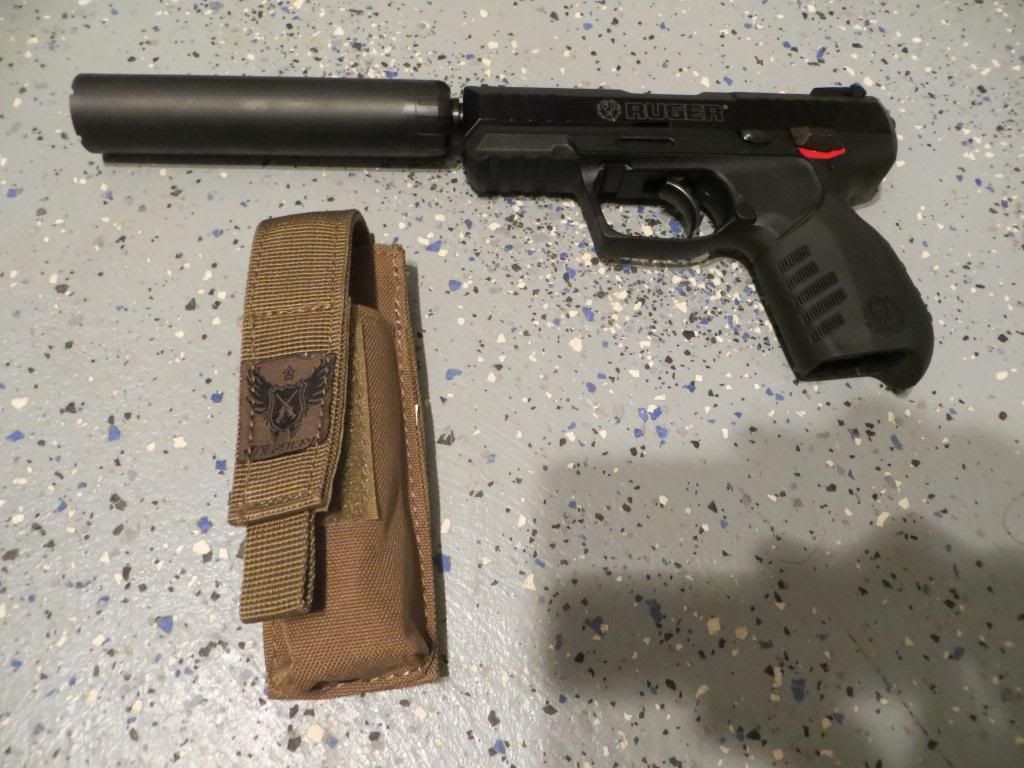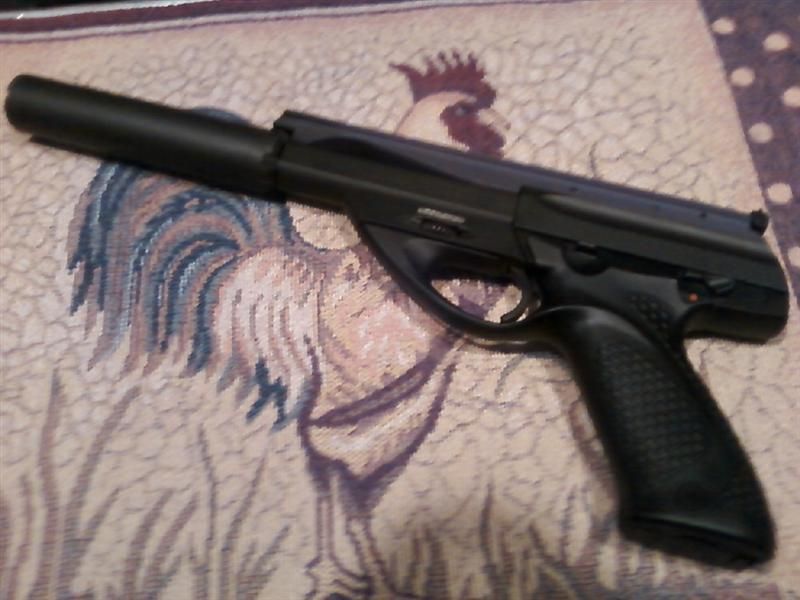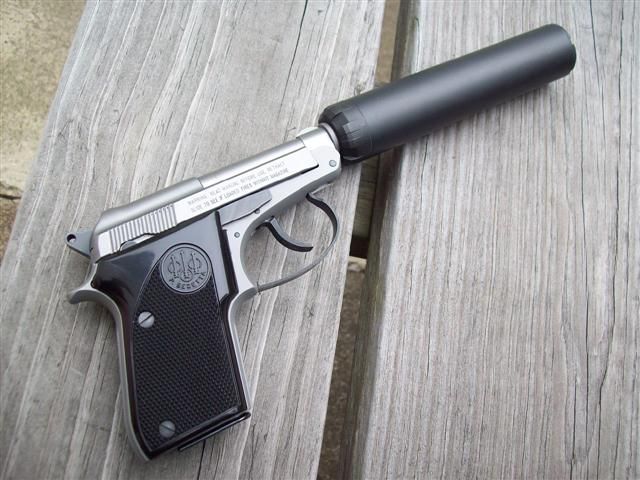Spats McGee
Administrator
Over the past few months, I have found myself itching to get a suppressor. I've done some internet research, and asked some of my friends for information. However, if I'm going to jump into a project that's going to cost me a few hundred bucks, plus the stamp, and I'll have to wait a while for the stamp to come in, etc . . . I want to be sure I've done my due diligence, and that I wind up with someting that I like. I hate buyer's remorse. I really, really do. Budget is a factor, but I'm not exactly sure what my budget is at this point. I'm just starting the research early (as I always do), and figuring that this is project that may just have to take a while, and be done in stages.
I'm also clever enough to know that if I'm getting all of my info from someone who has an stake in influencing my purchase, such as Advanced Armament's "Can U," then I need to double-check that information. I'm not knocking AdvArm, but they are in the business of selling suppressors. Accordingly, it's in their best interests to steer me towards AdvArm products. That may or may not be in my best interests, though.
I'm also clever enough to know my limits. I'm not an engineer. I'm not a metallurgist. I'm in no position to judge the quality of a suppressor design by myself. However, I'm sure that some of you smart fellers can explain to me why one design might be preferable to others.
So, with all of that said, here are my opening questions and comments:
1) Caliber -- I think I've settled on a .22LR suppressor. I've considered going with a variety of other calibers, but I think I'd get a whole lot more use out of a .22LR supressor that could be switched between a pistol and rifle than any other caliber. (Realistically, this would be a plinker more than anything.) Am I missing something here? How hard is it to move a suppressor from a pistol to a rifle? I'm what you might call "mechanically reclined," but that looks like a job even I could handle.
2) Host -- I own exactly zero guns with threaded barrels, so I need something to host the suppressor. As mentioned above, I'm thinking one pistol host and one rifle host. All of the Rugers that I've ever owned have run like champs, so I'm thinking maybe a Ruger 22/45 with the threaded barrel for the pistol. Unfortunately, the Ruger 10/22 doesn't have a model with a threaded barrel, so I'd have to either have the barrel threaded, or buy an aftermarket barrel. Both sound like they're going to make the project expensive in a pretty big hurry. I see that there's a bolt action Savage (Mark II FV-SR) that has a threaded barrel, but I'm not seeing many other threaded barrel options in rimfire rifles. Am I just overlooking some? I had a semi-auto rifle in mind, but with an MSRP of $260, that Savage looks pretty good. OTOH, I see some threaded barrels that will fit a 10/22 on gunbroker for ~$100-150.
3) Threads: I've been seeing stuff like "threads are 1/2 x 28." I take that to mean that threads are not standardized across barrels and suppressors? IOW, I have to be sure to match: (a) suppressor; (b) pistol; and (c) rifle . . . if I want to be able to move the suppressor around?
4) Wet vs. dry suppressors: I've just begun seeing some stuff about wet and dry suppressors. Running a wet one sounds like a huge, messy pain. Is there any real reason to even consider them?
5) Decibel ratings. I've seen sound reduction ratings ranging from ~18db to something like 42db. Is there any level below which I ought not to even bother looking?
6) Finally, the "can-o-worms" question: Are there any particular models or brands that: (a) are just so darned good that I just have to consider them? or (b) are just so bad that I should avoid them at all costs?
Thanks in advance for helping me out.
I'm also clever enough to know that if I'm getting all of my info from someone who has an stake in influencing my purchase, such as Advanced Armament's "Can U," then I need to double-check that information. I'm not knocking AdvArm, but they are in the business of selling suppressors. Accordingly, it's in their best interests to steer me towards AdvArm products. That may or may not be in my best interests, though.
I'm also clever enough to know my limits. I'm not an engineer. I'm not a metallurgist. I'm in no position to judge the quality of a suppressor design by myself. However, I'm sure that some of you smart fellers can explain to me why one design might be preferable to others.
So, with all of that said, here are my opening questions and comments:
1) Caliber -- I think I've settled on a .22LR suppressor. I've considered going with a variety of other calibers, but I think I'd get a whole lot more use out of a .22LR supressor that could be switched between a pistol and rifle than any other caliber. (Realistically, this would be a plinker more than anything.) Am I missing something here? How hard is it to move a suppressor from a pistol to a rifle? I'm what you might call "mechanically reclined," but that looks like a job even I could handle.
2) Host -- I own exactly zero guns with threaded barrels, so I need something to host the suppressor. As mentioned above, I'm thinking one pistol host and one rifle host. All of the Rugers that I've ever owned have run like champs, so I'm thinking maybe a Ruger 22/45 with the threaded barrel for the pistol. Unfortunately, the Ruger 10/22 doesn't have a model with a threaded barrel, so I'd have to either have the barrel threaded, or buy an aftermarket barrel. Both sound like they're going to make the project expensive in a pretty big hurry. I see that there's a bolt action Savage (Mark II FV-SR) that has a threaded barrel, but I'm not seeing many other threaded barrel options in rimfire rifles. Am I just overlooking some? I had a semi-auto rifle in mind, but with an MSRP of $260, that Savage looks pretty good. OTOH, I see some threaded barrels that will fit a 10/22 on gunbroker for ~$100-150.
3) Threads: I've been seeing stuff like "threads are 1/2 x 28." I take that to mean that threads are not standardized across barrels and suppressors? IOW, I have to be sure to match: (a) suppressor; (b) pistol; and (c) rifle . . . if I want to be able to move the suppressor around?
4) Wet vs. dry suppressors: I've just begun seeing some stuff about wet and dry suppressors. Running a wet one sounds like a huge, messy pain. Is there any real reason to even consider them?
5) Decibel ratings. I've seen sound reduction ratings ranging from ~18db to something like 42db. Is there any level below which I ought not to even bother looking?
6) Finally, the "can-o-worms" question: Are there any particular models or brands that: (a) are just so darned good that I just have to consider them? or (b) are just so bad that I should avoid them at all costs?
Thanks in advance for helping me out.



